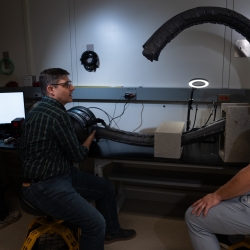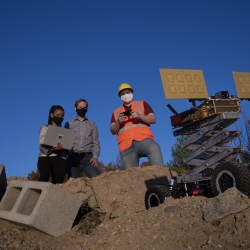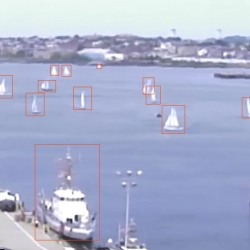Projects
Tagged As

Vine Robots for Collapsed Structure Mapping
These robots can navigate difficult urban disaster terrain to help responders locate and access victims for rescue.
Tags

Multi-label Dataset and Classifiers for Low-Altitude Disaster Imagery
This software program helps disaster responders extract actionable information from post-disaster aerial images.
Tags

Underwater PB&J: Combining Diver and Robot Strengths for Optimized Mid-Mission Teaming
New navigation and vehicle autonomy algorithms consider which tasks humans and autonomous systems respectively do best, with the goal of improving search path planning and object classification in underwater environments.
Tags

Radio-Based Navigation for Environments Without GPS
With the goal of enabling navigation in environments where GPS is unavailable or unreliable, researchers are developing algorithms to fuse information across a network of small, low-power radio-frequency devices.
Tags

Undersea Vision-Based Navigation and Pose Determination for Human-Robot Teaming
Undersea vision-based navigation and pose determination will enable divers and robots to collaboratively solve complex tasks in an inherently unstructured environment.
Tags

National Demand PPE Study Web Application
The application helps users to plan pandemic response by estimating state and regional personal protective equipment (PPE) demand.
Tags

Machine Learning in Resource-Constrained Environments
Robust, trustworthy, and safe machine learning algorithms that operate in resource-constrained environments will improve missile defense and other target recognition and mission planning systems.
Tags

Motion Under Rubble Measured Using Radar
Our see-through-wall sensor is a lightweight, portable technology that peers through rubble and debris of a disaster site to detect survivors.
Tags

Waterways Automated Vessel Information
Our video analytics are helping to improve waterway security.
Tags